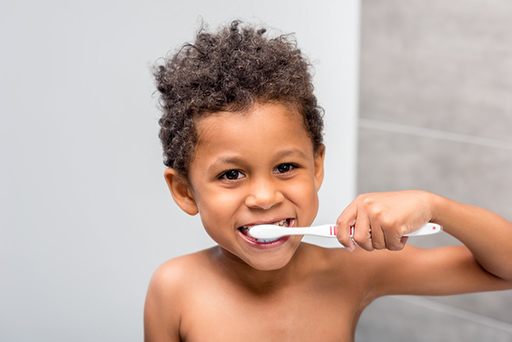 The appearance of a new baby tooth, or its eventual replacement with a new permanent tooth, usually signals the healthy ongoing development of a child's dentition. Occasionally, however, baby or permanent teeth don't grow in quite as expected, with the resulting abnormalities contributing to functional problems.
Whatever stage of dental development your child has attained, you can benefit from learning about the various ways teeth may erupt, including the signs that your child might require pediatric dental assistance. Here are four common tooth eruption issues to watch out for.
The appearance of a new baby tooth, or its eventual replacement with a new permanent tooth, usually signals the healthy ongoing development of a child's dentition. Occasionally, however, baby or permanent teeth don't grow in quite as expected, with the resulting abnormalities contributing to functional problems.
Whatever stage of dental development your child has attained, you can benefit from learning about the various ways teeth may erupt, including the signs that your child might require pediatric dental assistance. Here are four common tooth eruption issues to watch out for.
- Permanent Teeth That Never Appear
Children's teeth that never erupt at all present obvious causes for concern in parents. In some cases, the absence of a baby tooth stems from a congenital abnormality. A missing baby tooth usually indicates the absence of a permanent tooth in that position as well.
Has your child lost baby teeth without growing permanent teeth in their place? This problem often means that the permanent teeth never developed, a condition called hypodontia. Hypodontia occurs in up to 20 percent of Americans, often in the form of missing wisdom teeth.
If you worry about the absence of one or permanent teeth, bring your child to the dentist for X-rays. The tooth may simply have delayed its eruption, a situation that eventually corrects itself. The dentist can also make use of bonding to reduce an obvious gap between teeth or install a dental bridge to replace a missing tooth.
- Baby Teeth That Refuse to Budge
If a baby tooth does not have a permanent tooth lying in wait beneath it, the baby tooth's roots may not resorb (dissolve) as they should. As a result, the baby tooth may remain in the mouth indefinitely. Your dentist may actually recommend simply letting it remain there as a preferred alternative to installing an artificial tooth.
Sometimes a baby tooth's roots can fuse to the surrounding jawbone, a condition called ankylosis. This fusion prevents the tooth from erupting, potentially displacing the permanent tooth beneath it. In these cases, a fused baby tooth that refuses to budge may require extraction.
Baby teeth that refuse to make way for erupting permanent teeth may leave your child with two teeth in approximately the same spot. This over-retention of teeth may occur due to tooth overcrowding, bruxism (tooth clenching and grinding), or root canal trouble.
If you child has just begun to display this problem, the dentist may decide to give the baby tooth additional time to fall out on its own. Once the permanent tooth has grown 75 percent of the way in, or once your child reaches the age of eight, the dentist will most likely extract the baby tooth.
- Impactions That Affect Dental Development
Children sometimes develop impacted permanent teeth, either before or during the eruption process. If a baby tooth completely blocks the eruption of a permanent tooth for whatever reason, dentists refer to that stalled permanent tooth as an impaction. Another kind of impaction occurs when a tooth grows sideways.
Permanent teeth that erupt at an angle may push against neighboring teeth. This disruption can damage the tooth roots, shift teeth out of their normal position, and produce pain when your child chews. Impacted wisdom teeth, a consequence of limited space at the back of the jaw, often create problems for teenagers.
Treatment of an impacted tooth depends in part on its position. Pediatric dentists typically extract impacted (and superfluous) wisdom teeth. However, a dentist will more likely help a canine tooth to erupt and then recommend any necessary straightening procedures to optimize your child's dental function and smile.
- Misplaced Permanent Teeth
Permanent teeth don't always erupt where you expect to see them. Even when a baby tooth has fallen out and left a clear path for a normal eruption, a permanent tooth may appear completely out of position, a problem known as ectopic eruption.
Ectopic eruption occurs when a tooth bud (the basic structure from which a tooth develops) sits in the wrong part of the jaw. Abnormalities in the rate of jaw growth or the positions of other teeth may contribute to this issue.
Ectopic eruption commonly affects the first molars and in the lower jaw and the upper canine teeth. A canine tooth may sit noticeably higher along the gum line than surrounding teeth.
Ectopic molars often correct themselves by the time a child reaches seven years of age. If this self-correction doesn't happen, your dentist may recommend surgical treatment to straighten the tooth position or remove the tooth in front of an ectopic molar (if it threatens to impact and damage that tooth).
Dentistry for Children & Adolescents can help your child through all the phases of dental growth and development. Contact any of our locations to schedule an evaluation and any necessary corrective treatment.